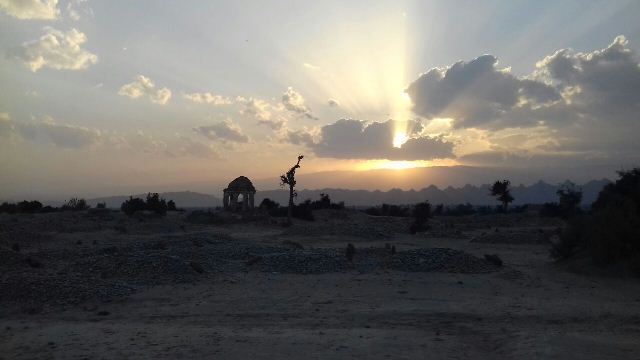
The kachho area of Dadu district, located in the lap of the Kirthar Mountains, is rich in archaeological sites where not only the tombs of the Talpurs who once ruled Sindh lie, but also a Zoroastrian graveyard and dozens of other historical sites are located. Unfortunately, no one has taken serious notice of the ravaging and the government is seemingly unwilling to protect the historical treasures.
"The tragedy begins with the killing of Nani Gopal Majumdar aka NG Majumdar, an Indian archaeologist who discovered more than 62 Indus Valley civilisation sites in Sindh. He was unfortunately killed in this area in 1938 by treasures hunters," explained Aziz Kingrani, an archaeologist and famous Sindhi writer.
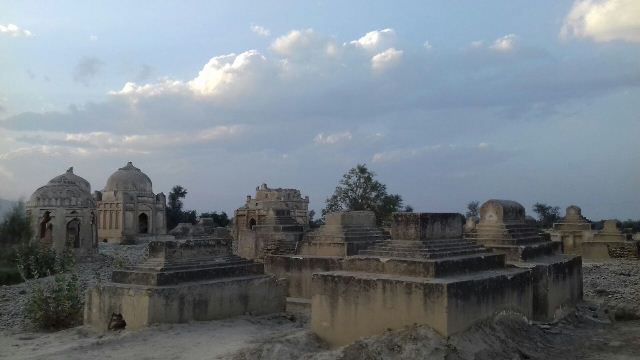 The tombs of Sindh's former rulers, the Talpurs and Kalhoras, are in shambles. PHOTO: EXPRESS
The tombs of Sindh's former rulers, the Talpurs and Kalhoras, are in shambles. PHOTO: EXPRESS"The Jewish Majumdar was traveling to Dadu city after visiting an archaeological site when some suspects followed him, thinking he possessed treasure. On resistance they killed him," he narrated, adding that Majumdar not only took part in the excavation of Mohen Jo Daro, but also excavated Chanhu Daro, Tharo Hill, Jhukar To Daro and many other sites, as well as penning a book, 'Exploration in Sind'.
Preserving heritage: Bhambore to get a facelift soon
State of affairs
During a visit to the area, The Express Tribune noted that the tombs of Sindh's former rulers - the Talpurs and Kalhoras - wore a desolate look, as many graves had been destroyed, both by greedy scavengers and the strong currents of the Gaaj River. "This dome belongs to Mir Allah Yar Talpur who was commander of the armed forces in the Kalhora regime in Sindh from 1700 to 1736. His relatives are also buried here," said local journalist Asif Jamali while at the graveyard, which is located in Taula Johi of Dadu district. More than 50 other historic graves and tombs are situated in the graveyard, a majority of which have caved in.
He said that the night hawkers stay here for days on end in order to dig out gold, silver and artefacts from the tombs. "This practice is not only confined to this site. People with a selfish desire for wealth also visit various other archaeological sites for this purpose," lamented Jamali. "No one owns these sites and the government does not bother to monitor these places, which are lying idle," he said.
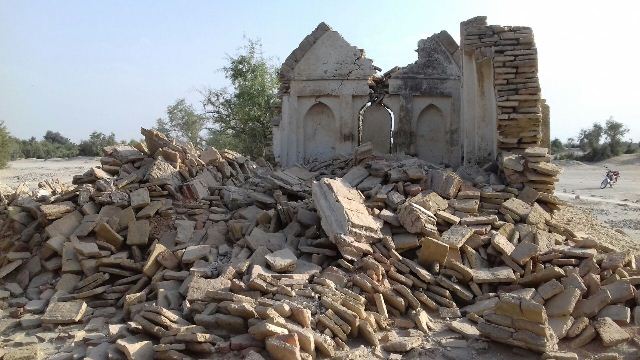 Many graves and tombs have been destroyed in search of treasure. PHOTO: EXPRESS
Many graves and tombs have been destroyed in search of treasure. PHOTO: EXPRESSDuring the Kalhora regime, which lasted in Sindh from 1701 to 1783, Khudabad town in Dadu district was the province's capital. According to archaeologist Hakim Shah Bukhari, the Kalhora rulers built tombs and mosques and promoted art in the province. "More than 100 sites are located in this area and you will find Islamic, Mughal and Rajputana art inside the tombs," revealed Bukhari, adding that in this belt many ancient sites and recovered artefacts bear a strong resemblance to those found in Mohen Jo Daro and Harappa.
A peek into the master plan for restoration of Makli
"In the kachho area, there are a few archaeological sites where one can find heartbreakingly beautiful art on the walls. At that time people had depicted various characters through the art on the walls and it looks as if women had a dominant role in society," he said, adding that one can find sketches of women fighting animals in the jungle and leading their men. "There is a lack of education and people still believe the myths. Whenever it rains lots of people visit these sites in hopes of finding treasure from these sites," he explained. Bukhari said that many graveyards and historical sites have been washed away because of floods and rains. "Mian Naseer Mohammad Kalhoro was one of the pioneers of the Kalhora dynasty and defeated Mughals in two battles near Dadu and Rohri. His graveyard is crumbling near Khairpur Nathan Shah but no one looks after it," he lamented. "Some people recently dug up their graves following reports of wealth over there," said the archaeologist.
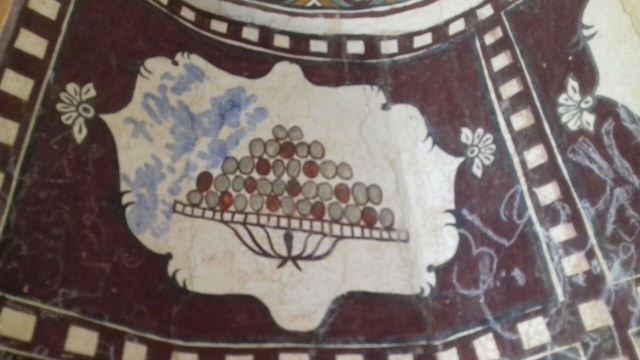 Intricate artwork inside the tombs has also been defaced. PHOTO: EXPRESS
Intricate artwork inside the tombs has also been defaced. PHOTO: EXPRESSKingrani, who has authored 'History on Walls', said the thousand year old caves near Sehwan and the Zoroastrian graveyard in Wahi Pandhi of Dadu district also need the government's attention. "Zoroastrians used to call themselves Bahadin. One can find these names inscribed on their graves," he said, adding that many graves have been smashed and a many more are in a poor state.
Despite many attempts, Culture Minister Sardar Ali Shah could not be reached for his version. However, his spokesperson said archaeology has been a federal subject and was devolved to the Sindh government after the 18th Amendment in 2010. "We will soon arrange the Kachho Conference where issues will be identified and the government take measures on war footing basis to conserve these sites."

-(1)1717678110-0/Kendrick-(1)-(1)1717678110-0-165x106.webp)





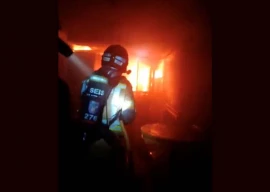

1735450716-0/Untitled-design-(77)1735450716-0-270x192.webp)


1735299255-0/sidra--(18)1735299255-0-270x192.webp)

1735380262-0/Untitled-design-(75)1735380262-0-270x192.webp)
1735296145-0/sidra--(16)1735296145-0-270x192.webp)







COMMENTS
Comments are moderated and generally will be posted if they are on-topic and not abusive.
For more information, please see our Comments FAQ